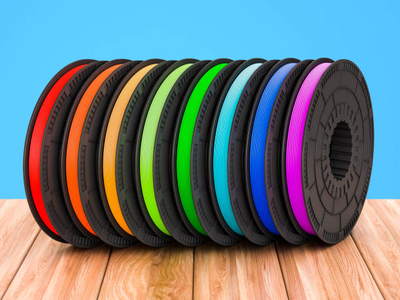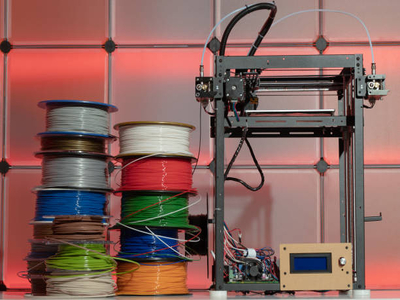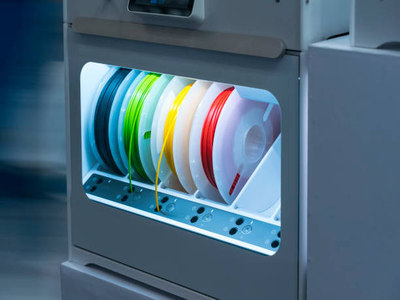What is the strongest filament for 3D printing? When it comes to 3D printing filaments, there are a lot of options to choose from.
We’ll look at the strongest, most robust filaments for 3D printing, discuss why strength matters, and dive into how to choose the best filament for your projects.
What Is The Strongest Filament For 3D Printing?

Polycarbonate
Polycarbonate is a robust and durable type of plastic that is about twice as strong as ABS filament.
It’s often used in bullet-proof windows, riot shields, and safety goggles and it’s no surprise that polycarbonate filaments are some of the strongest on the market.
However, polycarbonate is more expensive and can be challenging to work with.
Additionally, polycarbonate filaments produce harmful fumes when they’re printed, so you’ll need to make sure that your workspace is well-ventilated.
Nylon
Nylon is another solid and durable type of plastic, often used in clothing, rope, and other similar applications.
Nylon filaments are known for their impressive strength and flexibility and not only can be challenging to print with but also produces harmful fumes when being printed.
Additionally, nylon filaments tend to absorb moisture from the air, making them swell and become brittle over time.
TPU
TPU (thermoplastic polyurethane) is a type of flexible plastic often used in applications where flexibility and durability are essential, such as phone cases and even the soles of shoes.
TPU filaments are known for their impressive strength, flexibility, and abrasion resistance but are challenging to use and can produce harmful fumes.
Additionally, TPU filament tends to absorb moisture from the air much like nylon, which can make them swell and become brittle over time.
The video below compares ABS, PLA, Nylon, and Polycarbonate to further illustrate the differences!
Read More: Flexible PLA vs TPU. See these filaments side-by-side to narrow your choice!
Things to Consider When Choosing Filament

There are a few things you need to consider when choosing a filament.
The first thing you need to consider is the project you are working on and whether a durable, robust filament would be best or a more flexible filament that’s easy to work with would be better.
The answer to this question will help you narrow down your choices.
Another thing to consider is the strength of the filament itself as you want to make sure that your projects can withstand the rigors of use.
There are a few different ways to measure the strength of filaments, but one of the most common is their tensile strength.
Tensile Strength
Tensile strength measures how much force the material can withstand before it breaks. The higher the tensile strength, the stronger the filament.
Several filaments are available today that have high tensile strengths, but one is better than the others.
The Strongest Filaments
Among these high tensile strength filaments, is ABS (acrylonitrile butadiene styrene), a plastic that is so strong they are often used in industrial applications as it can also withstand high temperatures.
Aside from being strong, ABS filament is relatively easy to work with and a good option for those who are just getting started with filament printing.
Another strong filament option is PLA or polylactic acid.
This type of 3D filament is derived from plant materials, making it an environmentally friendly option while also being quite durable, though not as strong as ABS.
Read our related article on the Best PLA Brand. We put the top PLA filaments to the test and here are the brands that came out on top!
What Does Strength of Filament Mean?

When talking about the strength of a filament, two different properties are taken into account:
- Tensile Strength
- Yield Strength
Tensile strength is the maximum amount of force that can be applied to an object before it breaks.
Yield strength is the amount of force required to deform an object permanently or the point at which an object will no longer return to its original shape after being deformed.
Many different factors affect the strength of a filament.
For instance, the type of plastic that a filament is made from will significantly impact its overall strength.
Some plastics are simply more robust than others.
Additionally, the manufacturing process can also affect a filament’s strength.
For example, filaments that have been extruded at higher temperatures will generally be weaker than those extruded at lower temperatures.
So, What’s the Best Filament for Your Needs?
ABS Filaments
If you’re looking for a strong filament then going for one of the best ABS filament brands is your best bet.
These filaments are known for their impressive strength and durability.
On the downside, because of its robust strength, ABS filaments are notoriously difficult to print with and require high temperatures which often lead to clogged nozzles.
Additionally, ABS filaments produce toxic fumes when printed, so you’ll need to ensure that your workspace is well-ventilated.
If you’re looking for an alternative to ABS that is easier to print with but still provides good strength, then PLA (polylactic acid) might be better.
PLA Filaments
PLA filaments are also made from renewable resources like corn starch and sugar cane, making them more environmentally friendly than ABS filaments.
And, PLA does not require as high of temperatures to print with, which means that there is less of a risk of clogged nozzles.
However, PLA filaments aren’t quite as strong as ABS filaments, so keep that in mind when making your decision.
Conclusion
After discussing the different types of filaments, it’s evident that there’s no single most robust filament for all applications.
Each type of filament has its advantages and disadvantages, making them more or less suitable for specific tasks.
In general, however, ABS and PETG filaments are considered the strongest, most durable filaments available on the market today.
Either should be able to meet your needs!
READ MORE